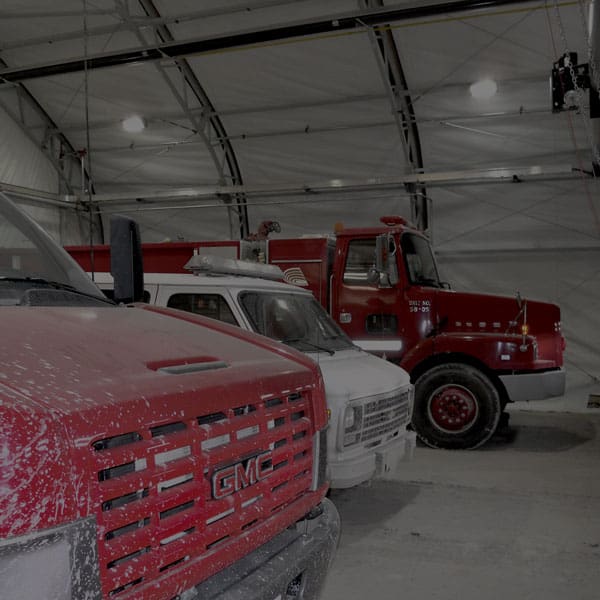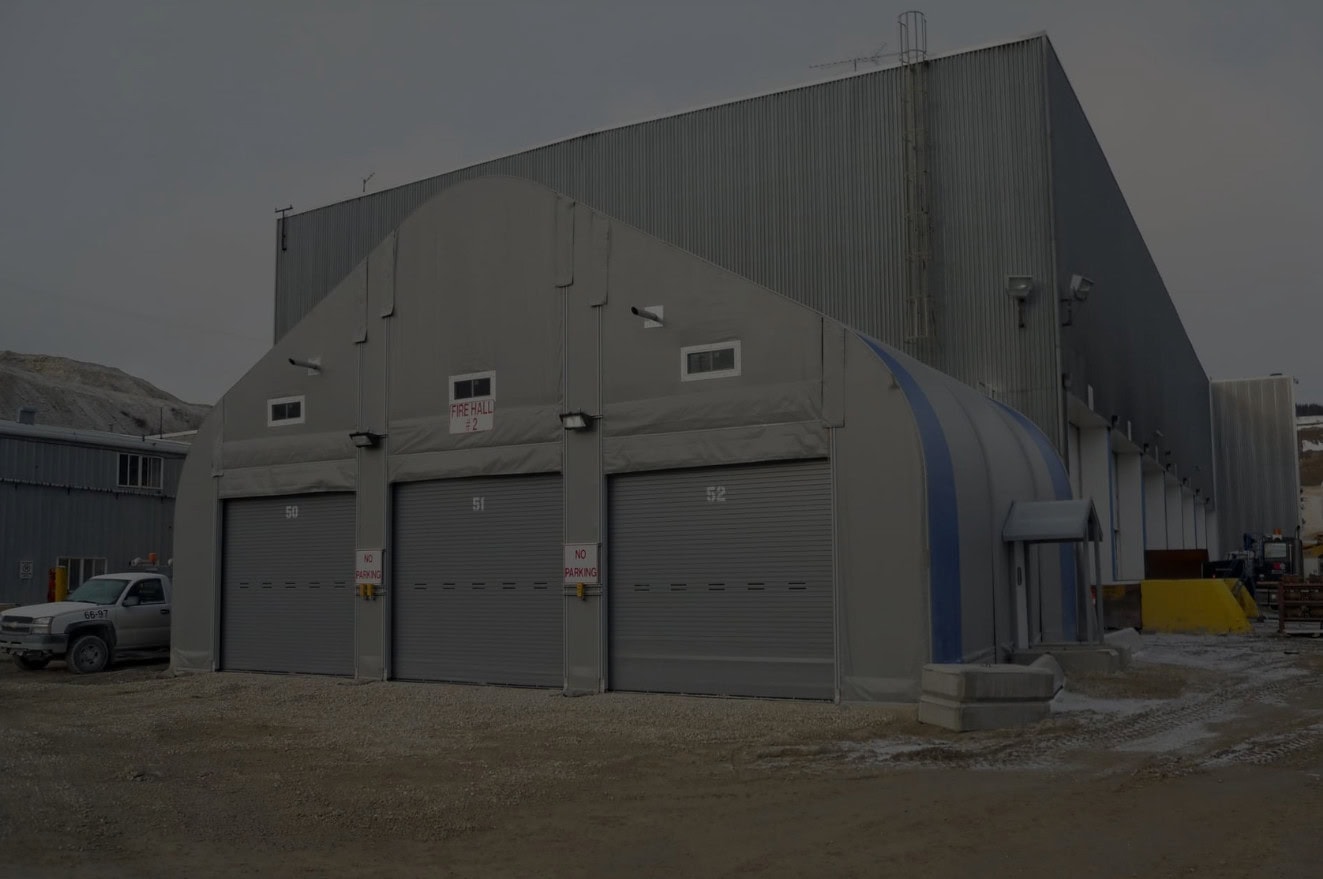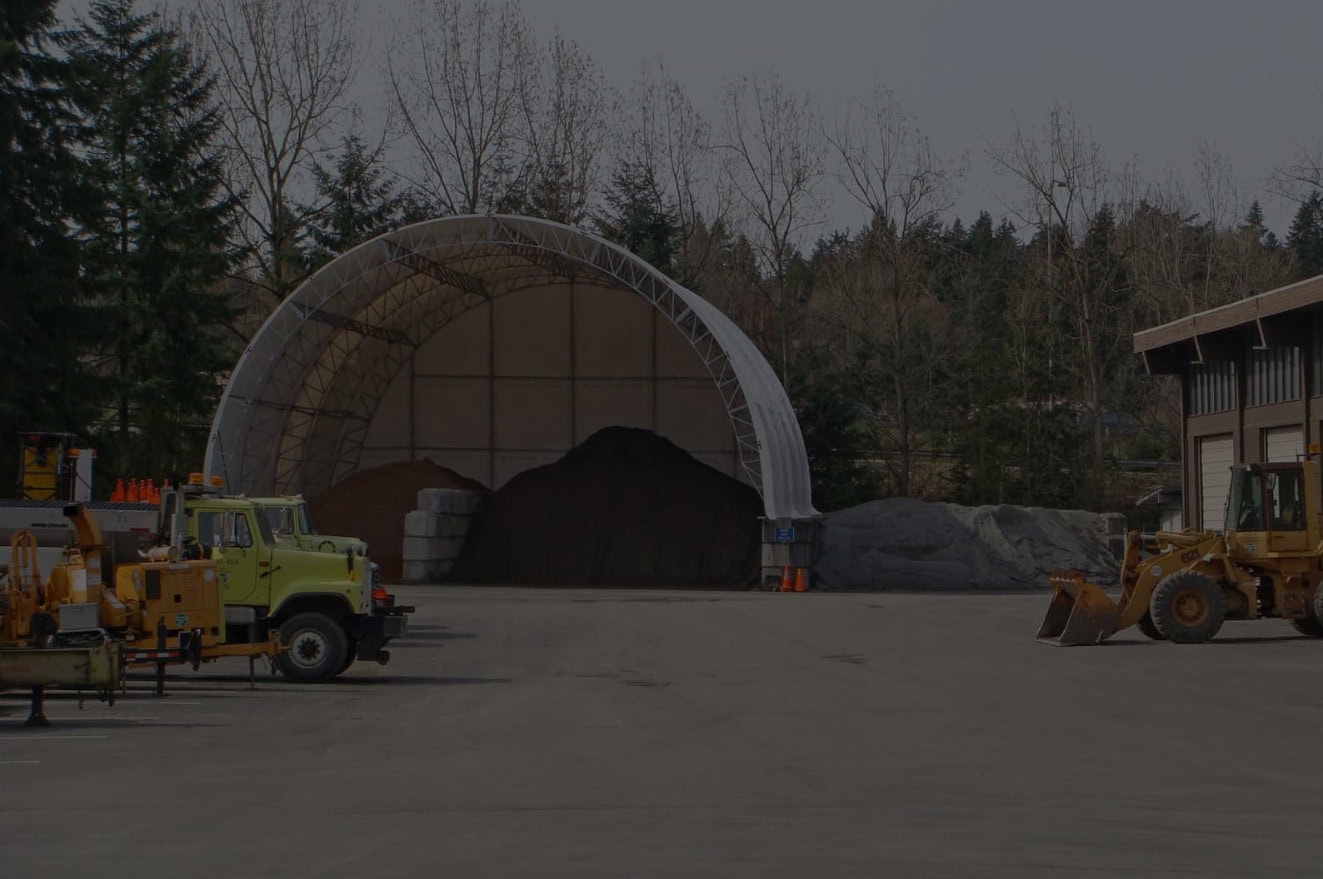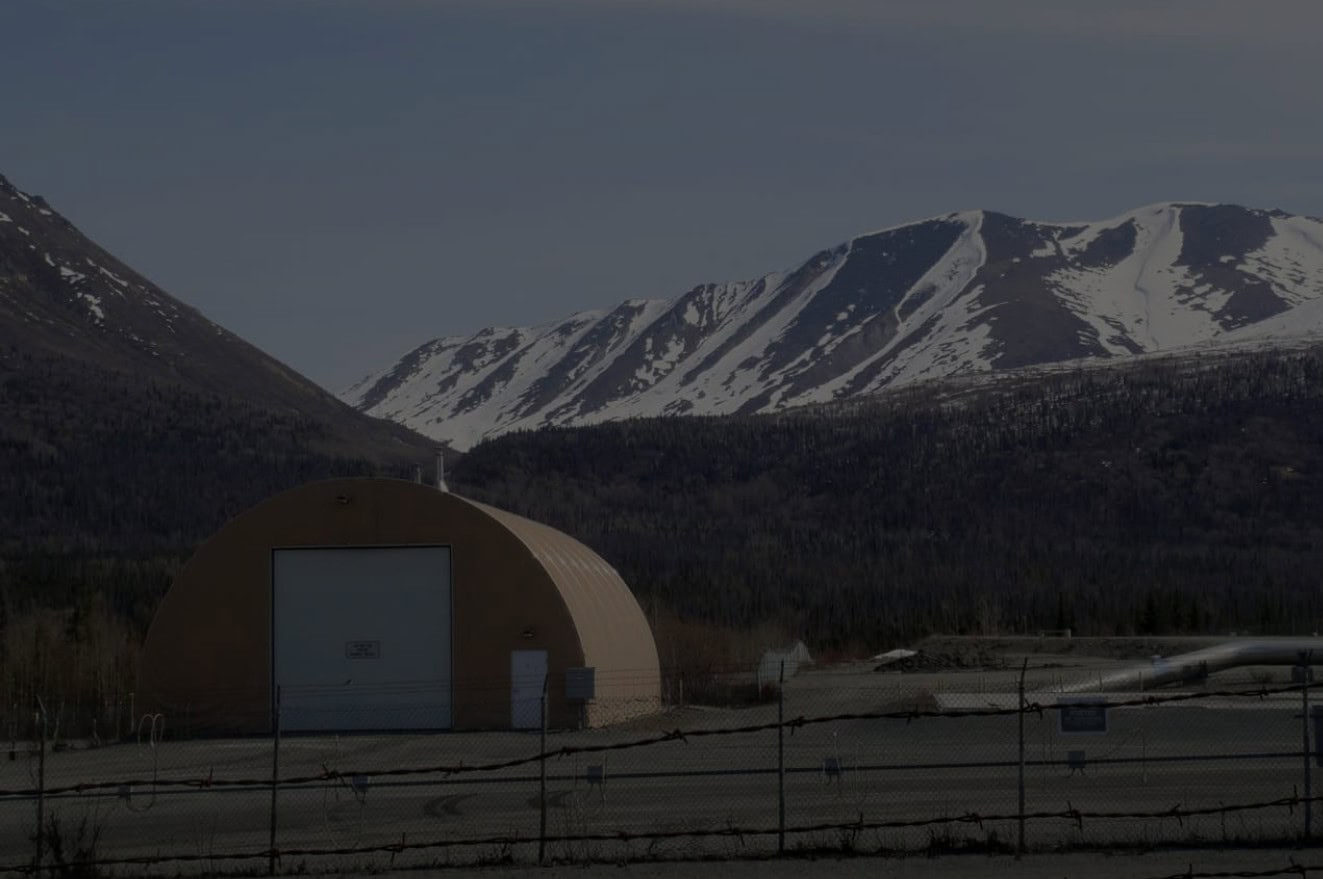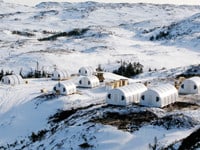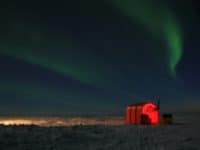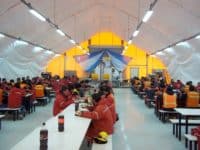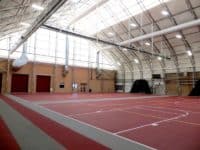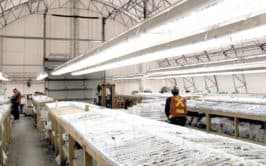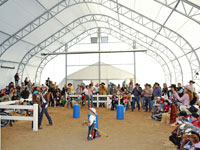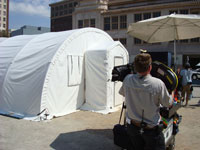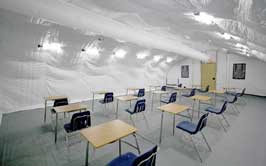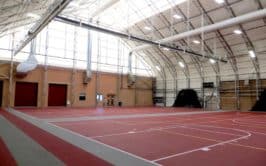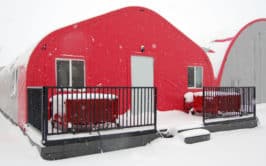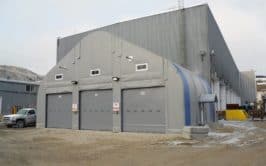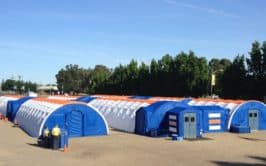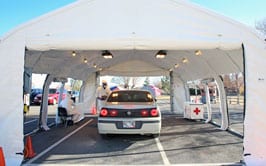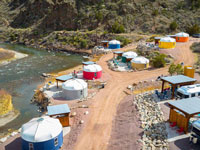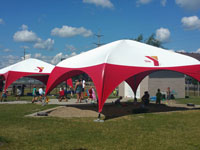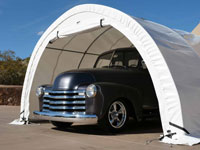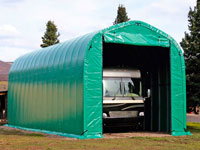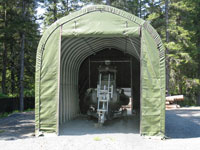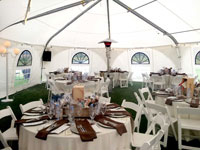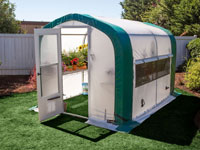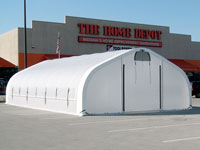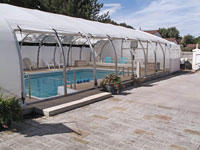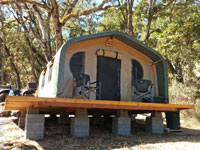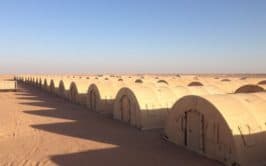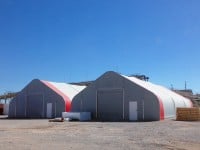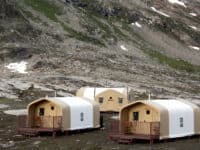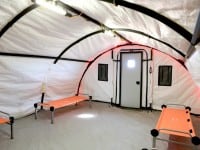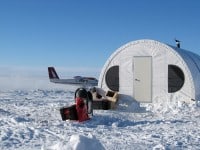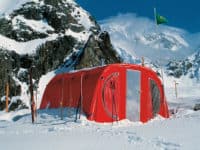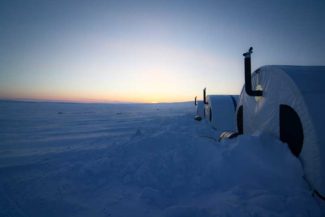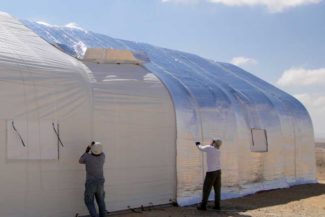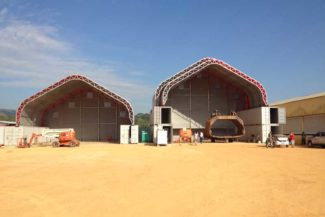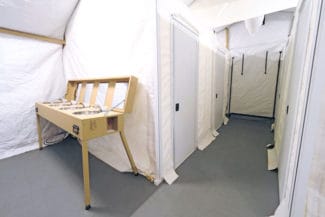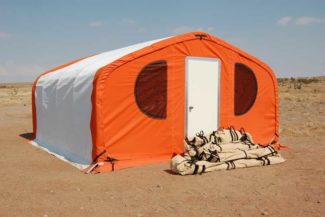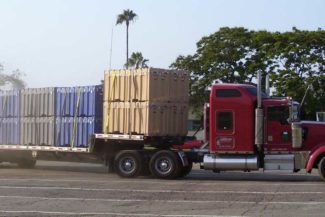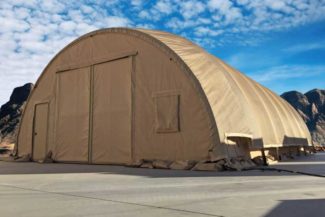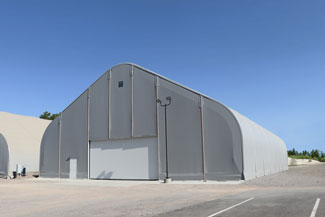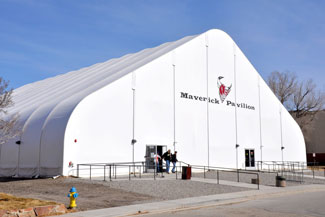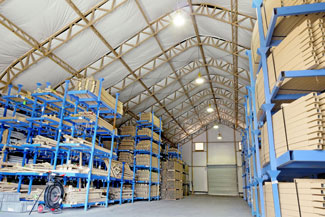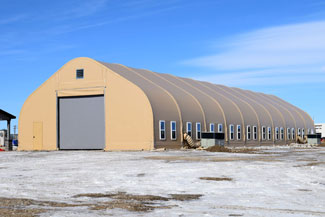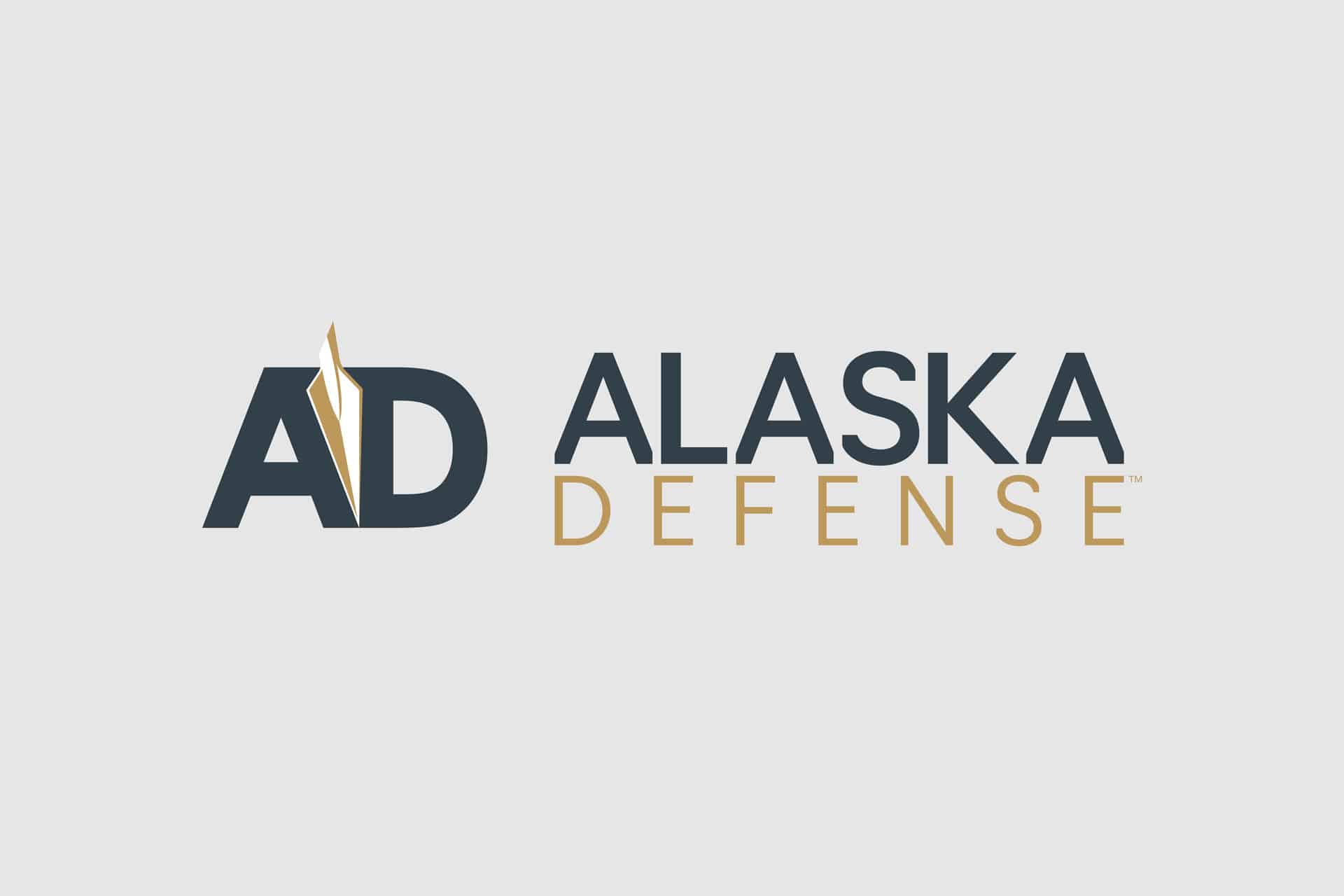Fabric Structures for Transportation and Public Works
Transportation, public works and other infrastructure initiatives need building solutions to help them get the job done. Engineered fabric buildings from Alaska Structures® are the ideal solution for municipalities needing structures designed for rapid setup, portability, year-round use and safety.
You may need a multi-bay, drive-through shop for tractor-trailer fleets or a pull-in structure with 10 bays for mixed-vehicle operations. Either way, our maintenance facilities are available in an array of building models, sizes and options. Available in many sizes to meet your building needs, our engineered fabric structures support any-sized municipal fleets.
For year-round operations in extreme climates, we offer proprietary insulation systems. These systems increase energy efficiency and create a temperature-controlled facility using HVAC systems.
Furthermore, create building solutions to meet your public works or transportation department’s distinct challenges with Alaska Structures. Our engineered fabric buildings are the ultimate choice for protecting work crews and equipment from the elements.
Multipurpose Fabric Buildings for Any Public Works Application
Our multipurpose fabric buildings suit the building needs of any public works application. Our basic buildings also provide superior road salt and sand storage protection compared to other tensioned membrane structures.
Additionally, we can configure our fabric buildings with insulation systems, HVAC, lighting and electrical systems, personnel doors, equipment doors, and soft- and hard-wall partitions. These allow transportation departments to create high-performance fabric buildings for a range of applications:
A temperature-controlled vehicle maintenance facility for public works departments using a DAGB Series™ fabric building from Alaska Structures.
Complete our online form to request a quote or discuss your transportation and public works department’s building needs!
The Advantages of Engineered Fabric Buildings From Alaska Structures
We engineer our high-performance buildings to meet area-specific wind and snow loads for safety, as local codes or the International Building Code (IBC) requires.

American-made craftsmanship using the highest quality materials

Lean manufacturing techniques that reduce production waste

Low-cube shipping that reduces the logistic burden and cost of transportation to remote sites

Few tool and foundation requirements

Less site preparation work required

Drastically shorter construction times

Highly portable buildings that clients can easily relocate or leave in place as permanent solutions

Virtually maintenance-free

Industry-leading longevity and rugged durability


